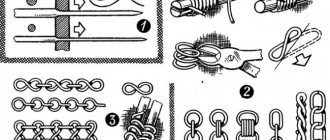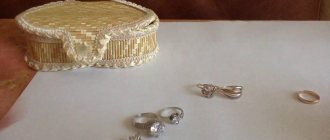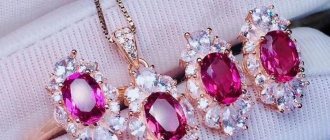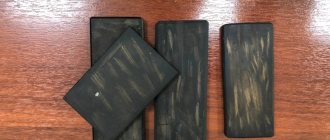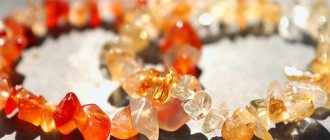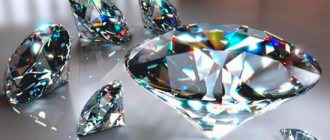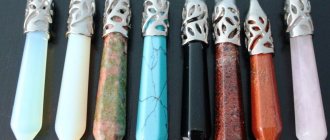Puzzled by the search for original business ideas, enterprising citizens are thinking about growing ruby crystals at home as a financially promising activity. Let's consider several options for producing artificial gemstones using an artisanal method.
An original business idea implies the absence of competition in the market. The presence of such a factor directly affects the profitability of production, promising the entrepreneur substantial profits. Making artificial stones that can be used in jewelry is not a new idea, but due to the labor-intensive process, it is not popular among novice businessmen. But in vain - after all, with a minimal investment, the presence of a sales market and, of course, determination, coupled with patience, you can get a steadily growing income if you invest in production.
How to properly care for plants?
Natural conditions for such plants are rocky slopes and deserts. These plants love high temperatures.
- Lighting. In order for plants to develop quickly and well, bright, preferably natural, lighting should be maintained.
The brighter the lighting, the better. Important. Living rocks need direct sunlight all year round! - Temperature. Of course, being a desert plant, living rock responds well to hot temperatures. In the summer, they can be kept at a natural temperature of 22 degrees. In winter, the temperature can be reduced to 11-13 degrees, in extreme cases 7 degrees.
Living stones survive temperature changes. Because in the desert such changes occur every day. But it is worth remembering that too low a temperature, for example below 7 degrees, is contraindicated for the plant. It is worth remembering that if artificial heat is created in winter, it may stop blooming. When the temperature is high in winter, the living stone begins to stretch and thereby lose its beautiful appearance.In summer, it is better to keep the plant in the fresh air. This will “harden” the plant and promote rapid flowering.
- Location. Typically, plants are grown in extremely poor soil, the basis of which is sand. Some people grow them at home, but this is a very labor-intensive process.
- Watering. These plants cannot be watered often or a lot.
It is because of the bay that these plants die. After a few hours they may begin to rot. Therefore, watering must be treated with extreme caution. Plants need to be watered very rarely, but abundantly. Typically, the plant is immersed in water for 25 minutes, and then removed and allowed to drain. Watering is necessary only five times a year, from May to September. In the fall, living stones are not watered at all. Attention! It is strictly forbidden for water to get between the leaves of the plant. This can cause rot! - Air humidity. Living rocks tolerate dry air. During the plant's dormant period, it only needs low air humidity.
- Feeding. Since the plants are very hardy and are accustomed to withstanding even the most extreme conditions, they do not need feeding.
But the only exception to feeding is the case when the flower has not been replanted for a very long time and was in a small pot for it. Only in this case should you feed the flower with fertilizer for succulents. After the plant enters a dormant period, feeding should be stopped. Otherwise, everything may turn out to be that the plant stops blooming. - The soil. As mentioned earlier, the soil should be light and rocky, which can allow air and moisture to pass through. Often, living stones are planted in soil intended for cacti. If such soil is used, then you need to add 0.25 volumes of coarse river sand to it.
- Trimming. The plant does not need pruning or shaping; it is better not to touch it, except in one case. This case is a flower transplant. When the plant is removed from the pot along with a lump of earth, most of the lateral roots are cut off. The plant very quickly restores cut roots.
Verneuil apparatus for work at home
Growing a red crystal is quite quick and easy using the Verneuil apparatus. The main advantage of this device is the rapid growth of the crystal. A sample weighing up to 30 carats can be obtained in 3 hours. In addition, using the device it is easy to grow artificial sapphires and topazes.
If previously this device was used exclusively in industrial conditions, now it can be assembled at home independently.
The Verneuil apparatus consists of components such as a growing crystal, a crystal holder, a burner for melting the powder, a cathetometer, a shaking mechanism, a crystal lowering mechanism for more uniform growth, a muffle and a hopper into which the salt mixture is initially supplied.
To obtain ruby using this method, you will need to use a mixture of aluminum dioxide salt and chromium oxide.
The process for obtaining a crystal is as follows:
- the powder is placed in a hopper;
- the fire is supplied to the bottom of the bunker;
- flying through the fire, the particles melt and fall into a thin film of the melt;
- Since the crystal slowly sinks as it forms, this makes it possible to maintain a constant growth rate of the artificial stone.
Reproduction methods
There are only two ways to reproduce these flowers:
- cuttings;
- seeds.
Propagation by seeds
The seeds of this plant are formed in place of the flowers. Seeds must be sown in moist soil and kept at a warm temperature (20+ degrees).
Seeds of living stones can be purchased in specialized stores for this purpose or ordered via the Internet. You can also get your own seeds. It is worth noting that flowers are very easily pollinated: if there are two separately flowering plants, then using a brush you can transfer pollen from one living stone to another.
Attention. Fruit ripening and seed production occurs within nine months. It is best to sow the resulting seeds directly in the sand and also moisten them.
In warm weather, plant seeds germinate perfectly in one and a half to two weeks. But seedlings grow more slowly. Leaves may appear even six months after germination. With the right approach, you can propagate plants from seeds at any time of the year. Another method of propagation by seeds:
- The seeds are collected from the fruits of the plant and stored in a dry and dark place for 5 months.
- One day before sowing, the seeds must be soaked in warm water for several hours.
- After this, you need to plant the seeds in moist soil.
- The seedlings are placed in a separate container, which is covered with glass and stored at a temperature of +23 to +27 degrees.
- Next, the resulting plants can be transplanted into separate pots.
In the first months of life of living stones, it is necessary to completely adjust the plant watering system. Mold or algae should not appear on or near the plant. The soil should not be allowed to dry out. After 3 months have passed, you can intervals between waterings.
When the plant is 6 months old, they will shed for the first time: the two old leaves will begin to dry out and two new leaves will gradually emerge from them. When the plant sheds, it is necessary to stop the watering process. From November to February, you need to lower the temperature to +17 degrees and stop watering. Once live rocks are a year old, they require warm, sunny conditions during the fall and winter.
Cuttings
With cuttings the situation is more complicated. Cuttings require special knowledge and skills in this area. Therefore, ordinary people who want to propagate a plant by cuttings will not be able to do it themselves.
Economic calculations
Home technology is always cheaper. You can calculate the cost of all components, costs, and determine the approximate cost of the resulting samples. What is taken into account for rubies:
- cost of device parts;
- electricity costs;
- price for purchasing powders for the crystal base.
Even approximate calculations will show the benefits. The cost of all components will not be even 500 rubles. For that kind of money it is difficult to buy ruby jewelry of beautiful appearance and excellent quality. The process should not frighten home experimenters and legality. Natural minerals are regulated by the state; synthetic minerals are not covered by the documents. If a decision is made to open a small production, it should be registered in the prescribed manner. The soul will be in place, the work will bring only satisfaction.
Read also: What varieties of strawberries can be grown at home in winter
A gemstone created by yourself will be a source of pride. The craftsman will gradually learn to change the shades of rubies. The next step will be creative work on the received samples, transforming them into interior design items and original decorations.
What does the succulent and its seeds look like in the photo?
Here you can see a photo of the plant and its seeds:
Varieties
If about forty species grow in natural conditions, then in indoor floriculture a dozen to one and a half popular species and hybrids are grown. Let's look at the most famous varieties of “living stones”.
Aucamp
The leaves have a rounded upper part, reaching four centimeters in width. The main color is green, but there are varieties of gray-blue color. And there are brown spots scattered on the top. The gap between the leaves is deep. The flowers are large and yellow.
Leslie
It is distinguished by its small size - the diameter of the upper part is from 1 to 2 cm. Colors: gray; brown with a pink tint; coffee with milk; reddish green. The upper part is covered with marble stains of a darker color. The size of the flowers exceeds the diameter of the leaves, reaching five centimeters. Yellow or white flowers emit a light scent.
Most suitable for beginner gardeners, as it tolerates errors in watering more easily than other types.
Marble
The gray leaves expand upward, reaching two centimeters in diameter. The upper part is covered with a marble pattern, which gives the species its name. Flowers are white, 5 cm in diameter.
Olive green
The olive green color of the leaves at the top is complemented by spots. Plant dimensions: height – 2 cm, width – 1.5-2 cm. It is distinguished by a small depth of the gap between the leaves, not exceeding 5 mm. Flowers are yellow.
This may be interesting: Money tree - care at home
Optics
The leaf size is 2 cm. The color of the leaves ranges from light green to gray-green. There is a subspecies with purple leaves. The leaves are separated by a deep cleft. Flowers are white.
Beautiful
Size: height - up to 3 cm, and diameter - up to 2.5 cm. It is distinguished by a deep cleft between the leaves. The leaves are yellow-brown, covered with dark sinuous lines at the top. The flowers are white, with a pleasant scent.
Pin-shaped
The red-brown fleshy leaves are about 2.5 cm in diameter. The top of the plant is flattened, covered with dark brown grooves and papillae, which makes the surface rough. The yellow-orange flowers reach four centimeters in diameter.
Divided
The leaves measure 3 cm in height and about 2 cm in diameter. The leaves are separated by a deep gap, practically not merging with each other. The color of the leaves is green with the addition of gray. The upper part is beveled. The small flowers are yellow.
Soleros
The olive-colored leaves have the following dimensions: height – 3 cm, diameter – 2.5 cm. The crevice between the leaves is small. The flat top is covered with darker spots. White flowers grow up to four centimeters.
False truncated
Leaf dimensions: height – 4 cm, diameter – 3 cm. Color: brown, gray and pink. The flat top is covered with a thin pattern of a darker shade. The gap between the leaves is narrow and deep. The flowers are golden yellow and reach 4 cm.
Replanting succulents
It is necessary to replant flowers into pots in which they are placed together with fully straightened roots. The root cannot be folded or rolled up. In general, transplantation should be done annually.
To soak the old substrate, the plant must be thoroughly watered, then carefully lifted on the sides, removed and shaken off the root.
It should be replanted either in soil or sand.
Attention. It should be remembered that for the first few days after transplantation there is no need to water the soil, even if it is too dry.
It is better to plant several live stones in one pot at once. The distance between plants can be 2 centimeters.
It has been proven that living stones grow worse individually than in groups.
You can choose a ceramic pot. It absorbs moisture perfectly.
You can also choose a plastic pot, but you need to place drainage on its bottom: polystyrene foam or expanded clay so that excess moisture is absorbed.
Description
Red corundum is called ruby. Natural and synthetic gems have the same formula Al2O3, and its color is associated with chromium ions. The physical properties are also no different. An artificial ruby has a hardness of 9: it can leave a mark on topaz, quartz, and only a diamond can leave a mark on it.
The density is relatively high - 4 g/cm3. It can be grown both in crystals and in bulks - cylindrical pieces with a narrowed end. The quality is high, although flux inclusions and bubbles may be present. Gemologists distinguish it from natural stone using a special device in which curved growth lines are visible. In a real mineral they are straight.
In nature, gemstones have different origins, but are most often mined from placers.
Synthetic ruby, used for inserts into jewelry, is obtained in specially designed autoclaves. The first small samples were obtained from the melt in the first half of the 19th century. Half a century later they began to make it on a production scale.
Difficulties in growing and caring for
- Pulling out seedlings. Due to lack of light, living stones stretch out and lose their decorative appearance. Its stem stretches and falls. If it is not possible to provide the plant with sunlight, then artificial light can be used. If, even with good artificial lighting, the flower begins to stretch, then you should lower the lamp closer.
- Green coating on the soil surface. With high humidity, the soil may become covered with a green coating. These are small algae. Live rocks do not tolerate algae, so you should get rid of it as soon as possible using a Q-tip.
- Rot. As mentioned earlier, rot can occur due to overwatering and water getting between the leaves. It is worth remembering that it is much better not to add water to a plant than to overwater it, because plants tolerate drought. But, if the question is about watering not just one flower, but a group of flowers in one pot, then it is necessary to maintain a moisture balance, because underwatering can simply dry out the flowers.
- Disruptions in care. Violations can occur due to non-compliance with the temperature regime, with frequent or extremely rare watering, with poor or insufficient lighting, and also if the plant is not replanted once a year.
Attention. Omission of at least one of these factors can cause developmental abnormalities in the plant, which can cause the plant to stop blooming or even die.
Growing living stones is a long, labor-intensive and energy-consuming process, but at the same time very exciting and interesting. Living stone is a very popular indoor plant that can become an impeccable interior decoration.
If you find an error, please select a piece of text and press Ctrl+Enter.
Home experimentation
It is recommended to start growing rubies with small volumes. First, experience is gained, the whole process is understood, and then direct systematic work begins. Synthetic creation of your own hands will not be inferior in beauty and attractiveness to natural minerals. The stones are in demand among jewelers, so a successful experience can bring additional income if a market is found.
There are several ways to grow. They advise you to try all the options, then settle on the one you like.
Artificial precious rocks created by man do not differ from natural ones in their chemical content and physical properties. The advantage of home technology is that it allows you to create perfectly pure breeds. In nature, this happens extremely rarely. The jewelry quality of laboratory samples is quite good. Another advantage of the mineral is its cost. The stones are cheaper than their originals, which originate in deep mines.
Popularity of artificial crystals
Only a professional can evaluate the authenticity of a gemstone, using his experience, knowledge, and special equipment. For most people, the subtle differences between the original and the artificial analogue are almost invisible. In many cases, synthetic stones even surpass real rubies in their beauty and purity of color. During the growing process, a perfect crystal is formed, and the master only emphasizes its perfection with cutting. There are no defects or foreign inclusions, as can often be seen even with high-quality rubies.
Large commercial enterprises often use counterfeit rubies in the jewelry manufacturing process. Only a jeweler knows how to recognize a replacement; for others, jewelry is simply a model of perfection. The popularity of such a product lies in its affordable price, because not everyone can afford a ring or earrings, a necklace decorated with a precious ruby.
